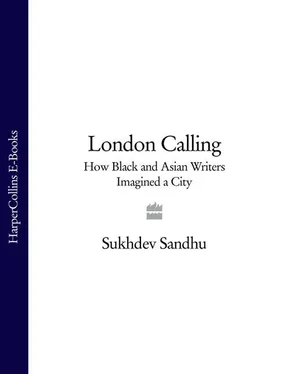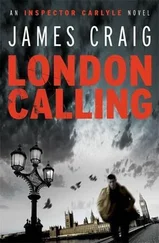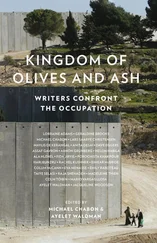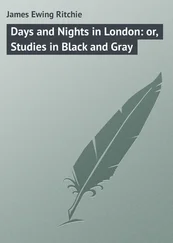Contemporary novelists increasingly understand and prize the fact that their metropolitan chronicles are part of a longer, deeply sedimented tradition of black London writing. Some – Mike Phillips and David Dabydeen, for instance – have themselves contributed to the upsurge in black English historiography over the last two decades. S.I. Martin has even been sponsored by the London Arts Board to organize literary walks pointing out the sites and landscapes that informed many of the eighteenth-century authors whose lives he wittily dramatized in his 1996 novel, Incomparable World . Other writers, such as Salman Rushdie and Bernardine Evaristo, have been inspired to put on their walking boots by reading history books which recount the intimate relationship between London and Empire: at a pivotal stage of The Satanic Verses , the anglophiliac and horn-sprouting Saladin Chamcha visits Club Hot Wax where he is confronted by a black literary London hall of fame – Ukawsaw Gronniosaw, Ignatius Sancho, Mary Seacole. This attempt at historical connection signals a living, felt tradition of black metrography – one that infuses the imagination of today’s writers. They are engaged in constructing a heritage, one that makes the city more navigable. They are also doing something that all immigrants from time immemorial have sought to do – to give shape and meaning to a metropolis that at first terrifies them in its noisy chaos and formlessness. Writing about the Sylheti natives who settled in the East End during the 1920s, the historian Caroline Adams observes:
It was not easy to find their way around in the big city and various ingenious systems were devised. For example, a man would arrange bricks along the pavement to mark his route to work through the confusing streets around Brick Lane … and get hopelessly lost if they were moved. Then there were the codes for identifying the buses to the West End: the number 8 was ‘two eggs’, the number 22 ‘two hooks’. 8
That this is the first book to be written which looks at black and Asian accounts of London is rather surprising. After all, many historians and anthologists have commented on London’s accretive and polyglottal nature. 9They point out that it has flourished through invasion and immigration. From the Romans and the Saxons, to the Huguenots, Russian Jews, Italians, Cypriots and the Irish, the capital’s energy, wealth and aura of infinite possibility have been fuelled most ardently by successive waves of outsiders. And yet these newcomers – especially those from the colonies – are rarely themselves heard. Their stories are considered ancillary, of minority interest. A.N. Wilson’s Faber Book of London (1993) excerpts Lord Scarman’s Report into the Brixton Riots of 1981 , but not a single passage from a black writer.
Even in the academic sphere, where questioning the traditional canon is the rage, there has been little interest in the relationship between colonial writers and the metropolis. Certain areas such as eighteenth-century slave memoirs and Anglo-Caribbean writing of the 1950s have been covered relatively well. No one, however, has attempted to pull together this disparate scholarship, and identify some of the tropes and motifs that have recurred down the centuries. It’s been left to creative writers to take up the challenge. Fred D’Aguiar and S.I. Martin have drawn parallels between late Georgian and 1990s black London; Caryl Phillips and Gbenga Agbenugba both hark back to the post-war period. Braiding past and present, reaching out for personal and social linkages, what Grace Nichols calls ‘webs of kin’, these authors’ books resonate with, and are underscored by, histories all too often absent from black literary criticism. 10
What becomes clear from reading Nichols’s work, and that of her forebears, is how slippery the term ‘metropolis’ is. It encompasses millions, arrivants from a thousand different places, aliens to one another, who, even if they live in the same streets and districts, often barely see – yet alone know – one another. This book will illustrate how the Petticoat Lane loft where Gronniosaw first spotted his future wife held none of the social cachet of Charles Street, the small Westminster side-road in which Sancho – also black, also an ex-slave – opened his grocery in 1773. Those lascars who froze to death in nineteenth-century Limehouse glueboiling factories had nothing in common with the Indian travellers who, fifty years later, stayed in expensive West End hotels and consorted with leading politicians and royalty.
Not only have colonial authors lived and worked in a variety of different boroughs, but they have also imagined, perceived and described the city in very different ways. London is variously portrayed as epicurean banquet, luminescent centre of the imperial world, mazy labyrinth in which self and sanity are lost track of, moral abattoir, ontological catwalk, redemptive culmination of life’s travails, inferno. Class, race, gender, historical context and personal psychology have all inflected their descriptions of the capital in large and unpredictable ways. There is no single black or Asian London. Like the city itself, the way in which it is imagined and depicted changes over time. And a good thing too. It’s not even obvious that the relationship between colonial writers and London has to be vexed or agonistic. The ‘metropolis’, contrary to critical cliché, does not always feel imperilled by, or hostile to, ‘marginal’ culture. On the contrary, as this book shows, individuals (such as Laurence Sterne) and institutions (such as the BBC) have traditionally been very keen to encourage marginal voices.
The role of ‘imagination’ is central to this book. For too long black literature has been considered in extra-literary terms. It is treated primarily as a species of journalism, one that furnishes eyewitness accounts of sectors of British society to which mainstream newspapers and broadcasters have little access. Given that interest in black and Asian people tends to be at its highest when they are attacked, rioting, or the subject of official reports documenting prejudice in some tranche of daily life, it is hardly surprising if black writing comes to be viewed as a kind of emergency literature, one that is tough, angry, ‘real’. It was ever thus: in 1787, two years before the first African-English autobiography was published, a trader-turned-Abolitionist called John Newton described in cold print what he had seen when he first poked his head below the deck of a slave ship:
the Slaves lie in two rows, one above the other, on each side of the ship, close to each other, like books upon a shelf. I have known them so close, that the shelf would not, easily, contain one more. 11
It is an astonishing metaphor – domesticating the inferno of the Middle Passage, week after week of shitting, starving, shrieking hell, to the status of an over-stocked personal library. And it was against this context that ex-slaves kick-started the history of black writing about London. Yet, even then, as we can see from reading the letters of Ignatius Sancho, imagination and idiosyncrasy kept spilling out of every page. The metaphors and allusions pile up. The tone of his correspondence, far from being strait-laced, is comic and highly stylized. Not only does Sancho elicit a good deal of pleasure from writing about London, he imparts it to his readers. So, I believe, does the work of many of the authors I discuss in this book.
My goal, then, is partly archaeological: to uncover and expose the sheer variety of works about London that have been written since Ukawsaw Gronniosaw’s slave autobiography in 1772. Indeed, almost every author whose roots lie in the former colonies has produced work, fictional or non-fictional, focusing on life in the English metropolis. To embark upon a study of this vast corpus of writing is, in effect, a decision to write a history of black British literature. At the risk of conflating the word with the world, the textual with the social, it’s also a history of black and Asian London itself. Read properly, the printed page is actually a very good place to turn to for an insight into coloured immigrants’ relationship to the capital. Cities have always been imaginative as well as physical places. We mythologize and fantasize about them. We create mental maps. Sometimes they’re created for us. This is particularly true for colonial writers, many of whom were taught about London and its ‘correct meaning’ in tiny village schools thousands of miles away from the actual city whose reality proved to be rather different.
Читать дальше












